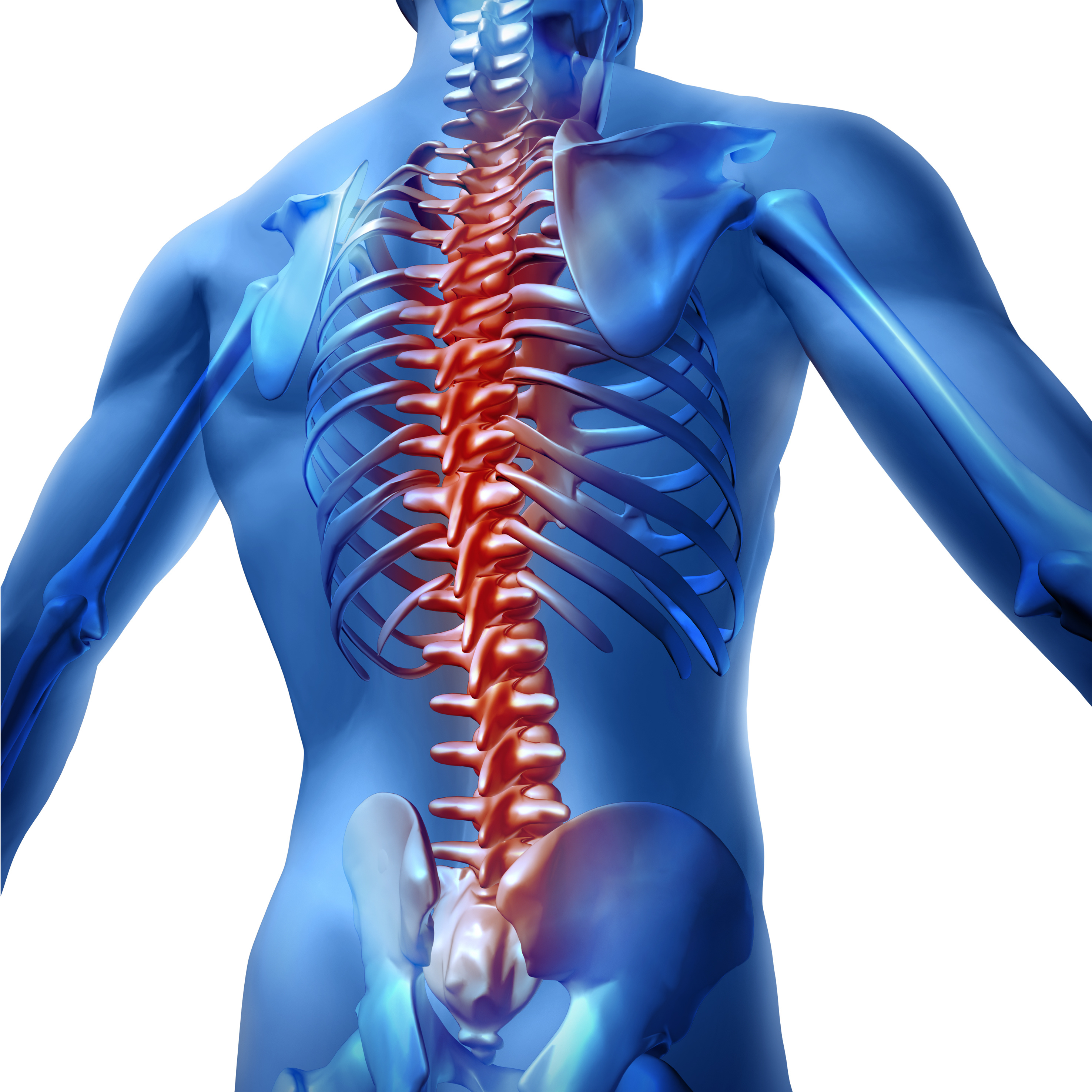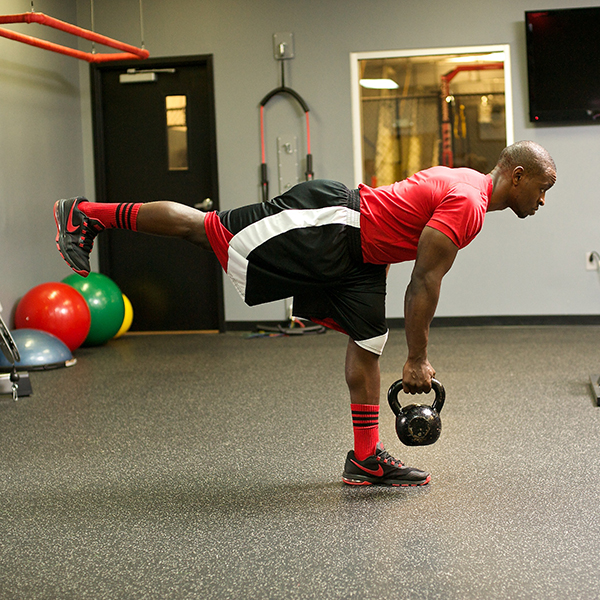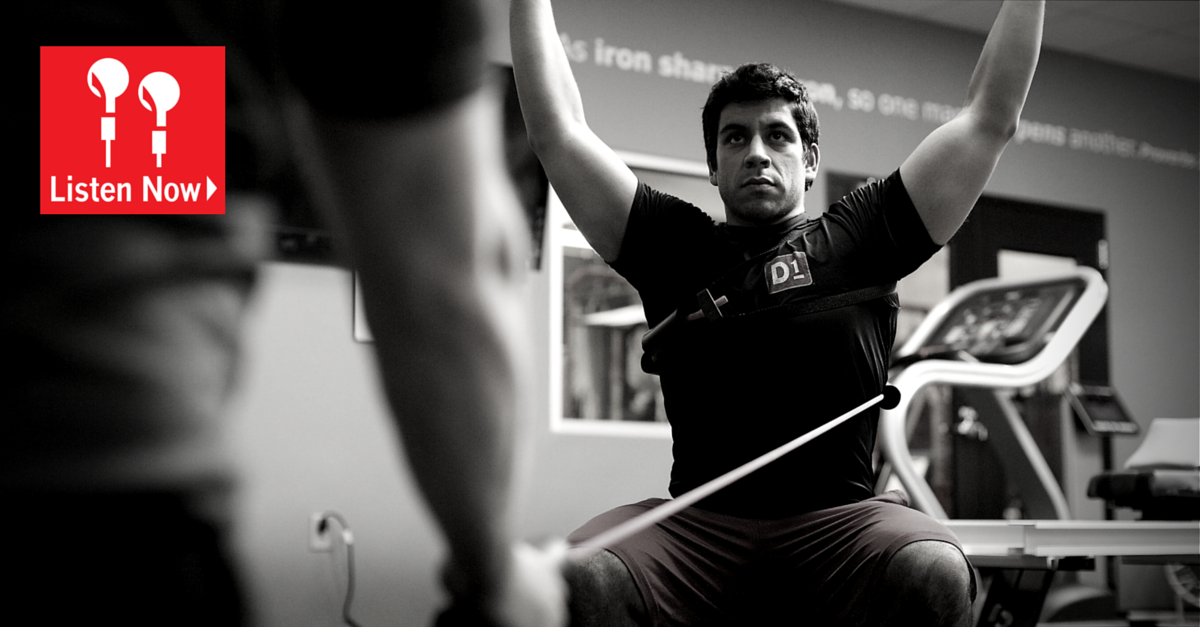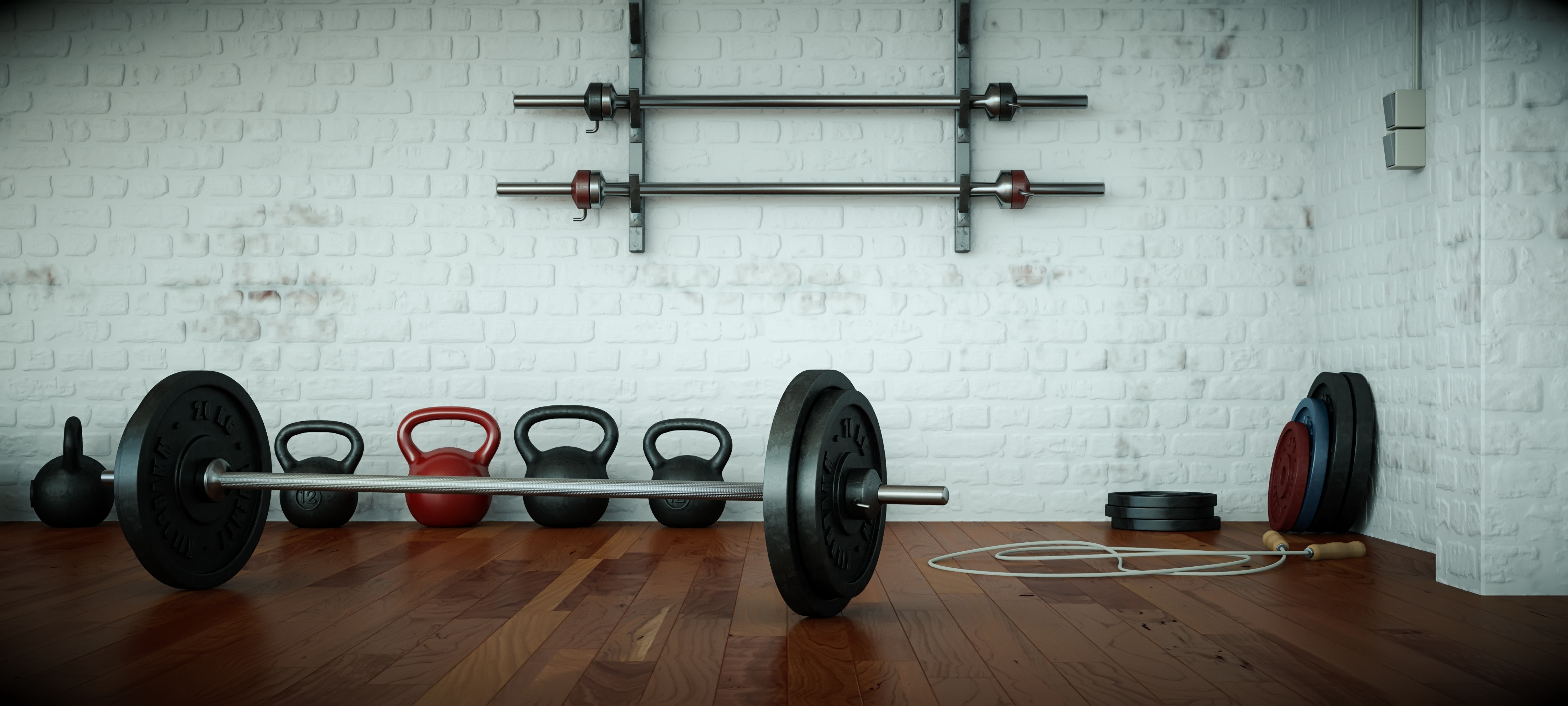How to Successfully Manage Multiple Athletes
Written by Gray Cook FMS Pod Casts
Dr. Rusin: As strength coaches, you and I have been in the situation where we have 20-25 athletes with one strength coach, putting people through movements, through training sessions, and having to manage multiple people at a time, and try to make sure that everything is pristine from a movement form but also that everything is going the way that we designed it to happen.
 Gray: I’ve got a strategy for you right there and I know it is inherently great for us if we can keep the group together. We’ve got 25 people. The best way for us to get our head around anything in the group is that we want them to do what’s on the card and we want the group to stay together. I ran into that in both the military, in special forms of operation and stuff like that, and the NFL – keep the group together.
Gray: I’ve got a strategy for you right there and I know it is inherently great for us if we can keep the group together. We’ve got 25 people. The best way for us to get our head around anything in the group is that we want them to do what’s on the card and we want the group to stay together. I ran into that in both the military, in special forms of operation and stuff like that, and the NFL – keep the group together.
The one analogy that I spun out is if you start the group together, they’re going to finish apart but if you go ahead and break the group down and you platoon your problems, everybody is going to have a weak link. My thoracic spine mobility problems are over here. My hip mobility problems are over here. My core stability problems are over there. You guys are going to be in little platoons – sub-groups with like problems.
I’m going to feed you a different workout/prep workout today than somebody else is going to get, but we all are coming together to do these things. If you let me platoon the group up front, I will have them together at the end. If you force everybody to do the same thing up front, each organism will take a different path and respond differently in the environment.
The best way to fragment a group is to make them do everything together up front. The best way to bring them together at the end is to platoon the problems and systematically dissect those out and bring them all together. Now, everybody won’t make it to the end. We will have a little bit of a fail rate but hopefully the system will discover why the failure is and we can do everything possible to get them as high in the hierarchy as possible.
That’s been one of the things that I’ve seen and I know you’re sensitive to that. We want everybody working together but I’ll tell you what. It’s actually very convenient and liberating to be platooned with people who have problems like you because now we can have that micro-competition of, ‘Alright. We’ve all got stiff thoracic spines over here, guys. Let’s see who can get the most thoracic spine mobility in the shortest amount of time’.
Dr. Rusin: I love that idea of platooning people out into separate groups. It’s really something that…trying to modify on the fly especially with the number of people that you’re managing all at once, say in a WOD or a training session, is very difficult to do. It’s even hard to do on a one-on-one basis modifying on the fly.
Only the best coaches in the world are able to do that. Just decreasing the risk of having to do that by spending the time and spending the energy screening people before anyone even gets into a training session I think is key.
Gray: You’re right and so many people get hung up in the ‘why’.
 ‘Well, why is my thoracic spine stiff?’ There are about 200 different reasons. First, the architecture of the thoracic spine is prone to stiffness in people who live in a sedentary society. Being addicted to the bench press from the time you’re 14 to 17 can definitely compromise your thoracic spine. Having breathing problems, seasonal allergies, trauma to your torso, there are so many things. By the time we tell you why, we could probably improve your thoracic spine mobility enough to move to the next level.
‘Well, why is my thoracic spine stiff?’ There are about 200 different reasons. First, the architecture of the thoracic spine is prone to stiffness in people who live in a sedentary society. Being addicted to the bench press from the time you’re 14 to 17 can definitely compromise your thoracic spine. Having breathing problems, seasonal allergies, trauma to your torso, there are so many things. By the time we tell you why, we could probably improve your thoracic spine mobility enough to move to the next level.
So many people get hung up in trying to make the FMS a diagnostic tool. I can’t tell you why you lost your thoracic spine mobility unless we do a little bit more testing and then the FMS. Incidentally, it becomes the chicken-or-the- egg argument anyway. I know the different strategic ways to get that thoracic spine mobility back. If we get it back and you keep losing it, you’re sacrificing it for probably some other body part that should have been picked up.
Related: How could the FMS Fit with CrossFit?
We may never know why you lost it but that’s not important. If you don’t respond to the corrective path that most people generally respond to, we also have a fail-safe - hit the big red button. We dump you right over to a movement assessment model like the SFMA. We go down the rabbit hole. We become manual therapists. We pull out our dry needles. We pull out our ART and our Graston tools. We pull out our manipulation, our mobilization, our kinesiotape and we’ll get it for you if we possibly can.
Most people don’t have to get to that point if they’ll simply be patient and say, ‘It took me 10 years to lose this thoracic spine mobility. I think five weeks is adequate time to try to get it back following this’. If we have something like the FMS that creates a feedback loop that at least lets you know you’re making progress, why wouldn’t you change your path?

John: Going back to just liking a model of a screen, it’s a shock to a lot of people to hear this but there are many, many CrossFit gyms out there right now in America and across the world that are currently using the FMS as their Gold standard screening tool before a client even moves into a training session. They’re using the corrective exercises and modifications to the generalized WOD programming and having a lot of success with it. Have you been able to consult with any of these gyms?

Gray: You know what? I probably meet more of these people at an FMS workshop or something like that. I haven’t really gone into any of the CrossFit gyms and consulted.
Now, I’ve been to Kelly’s place and one of the things that I think would be amazing to people is what Kelly has done. The body of work that he’s done with MobilityWOD is spot on. If you ran the movement screen and then took away all of the correctives that FMS has ever come up with and just inserted Kelly’s, I literally think we would be neck-and-neck.
The Functional Movement Screen runs through and says, ‘Yeah, I know your knee hurts when you squat but believe it or not, everything you’re dysfunctional in seems to be above your waist. Your core stability is down…blah, blah, blah…so we’ve got a lot to work on that won’t even put you in a compromised position with your knee’.
I think a lot of the general public when they go on the Internet and search for a problem area, they don’t know the difference between movement dysfunction and movement pain. The area of your body that hurts very often is the victim, the thing working overtime or compensating for an area of your body that is largely going untapped and untested by your exercise program, so it stays dormant and very dysfunctional and creates a ripple effect through your body.
The Functional Movement Screen basically can do one of two things. It can do a provocative pattern. It can provoke pain and the number one thing we’d say is, ‘Let’s figure out what that is’ but we can also find dysfunctional patterns and all we’d say is, ‘If you don’t have pain but you’ve got a lot of dysfunction, let’s just not load that. Let’s just not load that right now’.
The FMS can either provoke a situation that begs us to get it diagnosed if it’s painful or it can just demonstrate, ‘Even with no load, your squat actually looks pretty horrible’. Give me one good reason why we should load that today as opposed to adding 15 degrees to each ankle and 10 degrees to your thoracic spine, backing off on the load, seeing if now you can observe appropriate technique and rebuild you from there.

John: Yeah. You know, CrossFit, in terms of injury rates, the research is spotty right now but it’s very similar to Olympic style weight lifting or weightlifting in general with the incidence of shoulder injuries and lower back injuries.
The FMS has ways to identify not only dysfunction at these regions and the patterns that use these regions but also they include pain provocation tests that within a three-second time period, we can identify whether you’re going to be painful or not. As you know, pain changes everything.
Can you talk a little bit more about the dysfunction and pain provocation tests that could possibly be identifying the people that are going to be falling through the cracks once they get into the training and get into the WODS?
Gray: Yeah, I can.
Number one, a long, long time ago – far more long ago than I care to discuss – a guy named Mike Gattone was my lead instructor when I went through my Olympic weightlifting coaching certification.
At that time in the early 1990’s, believe it or not, among Olympic sports - real Olympic weightlifting - the sport (not the style) was one of the lowest injury rates of Olympic sports, and I’m sure curling probably less than that, but it was amazing that these guys were sometimes putting 2 to 2-1/2 times their bodyweight overhead in the smaller weight categories and yet very, very immune to injuries.
If you compared Olympic weightlifting to gymnastics back in the day, Olympic weightlifting was a far healthier endeavor than even gymnastics. I think gymnastics is just the training loads and training time they have to put in but Olympic weightlifting made good sense for creating a resilient body.
All of a sudden, there were far more people doing Olympic style – loose or tight Olympic weightlifting – than actually were doing competitive Olympic weightlifting and then the wheels fell off of the cart. We had people with a powerlifting background that just tried to add speed and a lot of different things like that.
 One of the early experiences I had in Olympic weightlifting with those few outliers that had chronic problems, we would do little tests like shoulder impingement or a prone press-up, sort of a Cobra style or a child’s pose from Yoga, to just basically run them through the end ranges of their joints to see if their joints locked up. All of a sudden, the coaches came to me and said, ‘Well wait. We don’t even use these motions. The back is not supposed to be in that position in lifting. Why are you checking it?’
One of the early experiences I had in Olympic weightlifting with those few outliers that had chronic problems, we would do little tests like shoulder impingement or a prone press-up, sort of a Cobra style or a child’s pose from Yoga, to just basically run them through the end ranges of their joints to see if their joints locked up. All of a sudden, the coaches came to me and said, ‘Well wait. We don’t even use these motions. The back is not supposed to be in that position in lifting. Why are you checking it?’
Your joint receptors and your muscle tension receptors give you proprioception – that body awareness. If you know in your most basic subconscious brain that you don’t like the last third of that motion, then you’re going to start consciously or unconsciously putting on the brakes halfway through the motion.
When the last third of the range is painful or unavailable-dysfunctional, we really know that the rest of the range isn’t that great either. The last third of the range just squeezes the problem so it comes to the surface, and we know to put you in a category that should probably work more on quality than quantity for a short amount of time. As soon as your quality meets the minimum safe standard, go back and train. You should be fine if you observe good technique, a good warm-up/cool-down and have a coach.
Our tests were designed not to emulate exercise in any way. We call our squat a squat – not because it represents the exercise. It represents the neurodevelopmental pattern that babies use. We call the lunge the lunge so the clients will know what the test is looking at but what we’re looking at is a reciprocal interplay between the arms and the hips that you would naturally use in running and climbing. Each of our tests might have an exercise name but that’s simply for clarity for the client.
What we’re capturing are the developmental milestones that get you from being an infant in a crib to a three-year-old that a parent can’t catch in Wal-Mart. Those steps were never coached by anybody but you went through them in a consistent way so as to develop a movement profile that will support almost any endeavor you want to do from throwing a javelin to climbing a rock.
If you ever lose one of those developmental milestones and you are literally going to write a new book or write a new paper and now I took away verse or I took away punctuation or I took away the first-person now or something like that so you’re trying to write a document of movement in a specialized platform - Olympic lifting or track-and-field – and now you’re missing one of the cornerstones for the learning loop of movement where your proprioceptive systems can work.
People think that I’m OCD on mobility like Kelly because I just think everybody should be more flexible. It’s actually deeper than that. It’s not the biomechanical rationale for having more motion. It’s literally that if you’ve got more motion, you’ve got a better potential for proprioception.
Now, what do you do with that? Are you sloppy or not? If you have a lot of motion and you’re sloppy, that’s when we lighten loads and really obsess on technique but if you don’t have the motion in the first place, you’re already doing the trigonometry in your brain to work around the problem. What we call that in the gym is compensation and if we load compensation, the SAID principle works in reverse. It serves to create bone spurs. It serves to tear tendons and muscles.
We will adapt even as compensators so if we’re going to basically lock down that adaptation, we’ve got to make sure we’re moving clean so that we don’t create an adaptation that’s counterproductive. If you think about it, thoracic spine stiffness is an adaptation. You imposed a demand that said, ‘You know, life would be easier if we just stiffened up the thoracic spine’.
That’s the SAID principle working in reverse so if we’re going to literally change the face of fitness and performance and really make fitness a sport, then the first thing we’ve got to do is let’s don’t reinforce a mistake and let’s don’t train the compensation to the point where a SAID principle occurs in the wrong direction.

 |
This clip was originally recorded as part of an interview with Dr. John Rusin for T-Nation.com. For more on Dr. Rusin's programs and methodology visit DrJohnRusin.com. |
Related Resources
-
Should You Screen Kids?
Posted by Gray Cook





